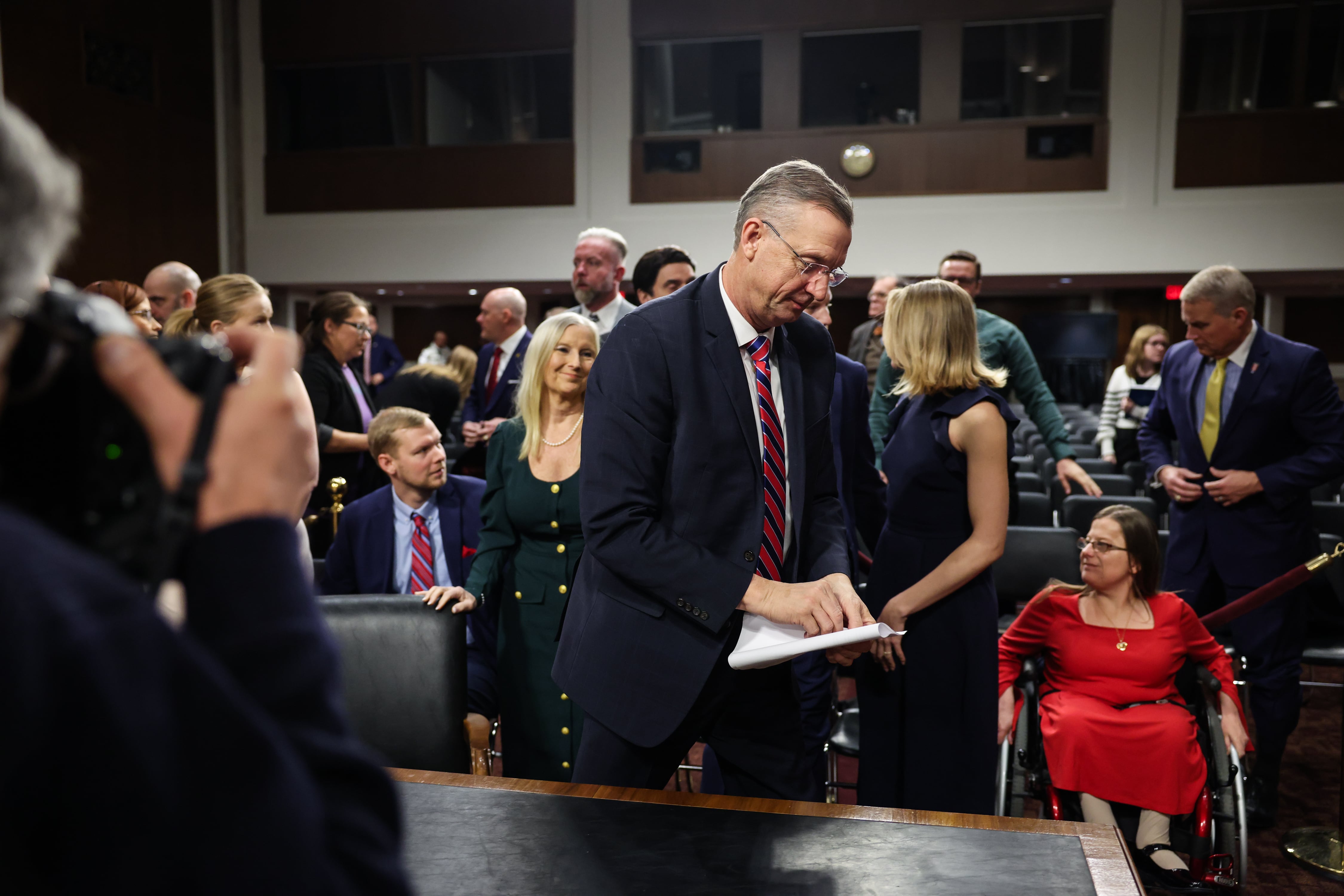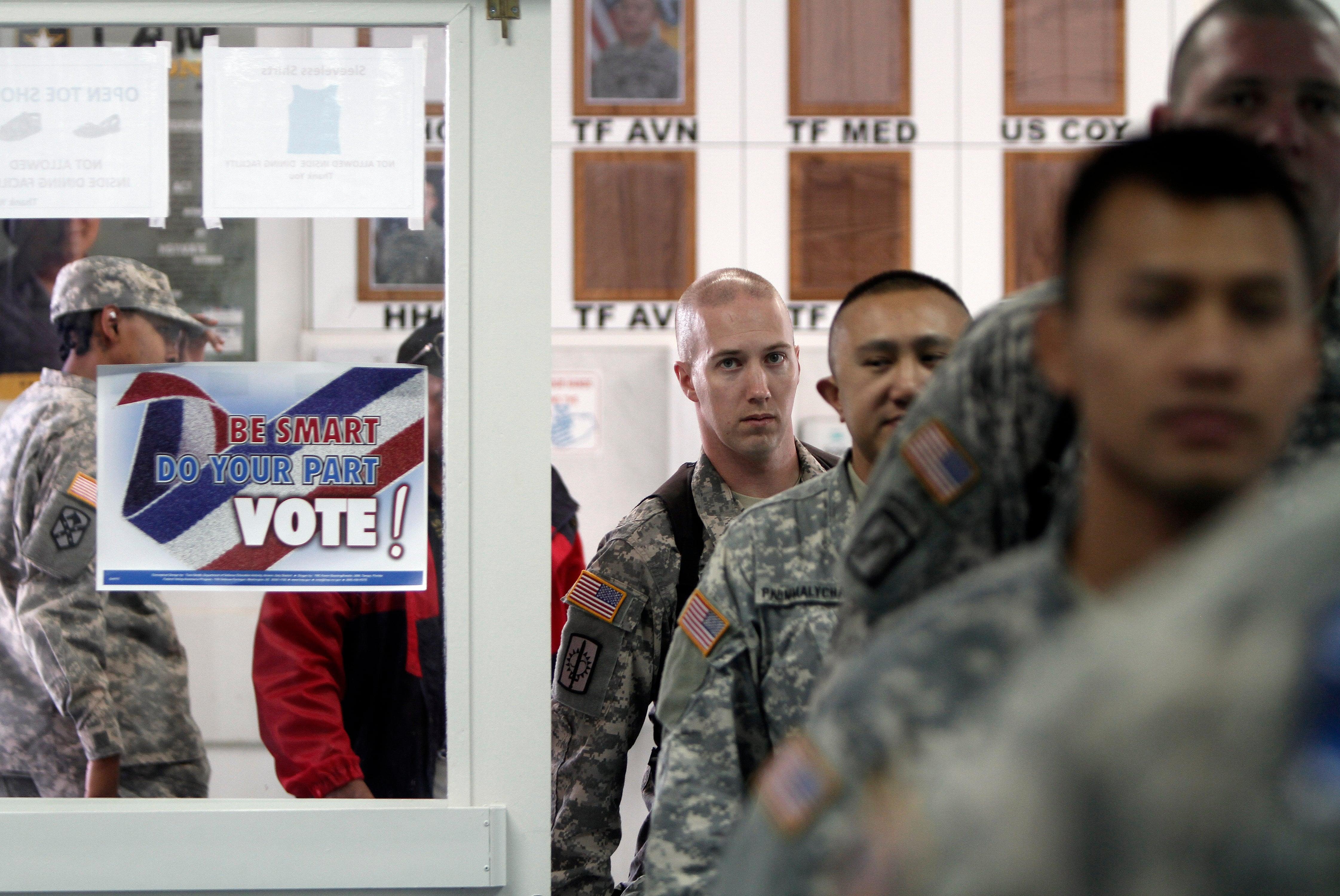The new master sergeant promotion board — a major component of the new enlisted promotion system that is being rolled out — will meet in May. Until now, boards were held only for promotion to E-8 and E-9.
Former chief master sergeants told Air Force Times they think the board process will help objectively evaluate airmen and decide who should advance.
"Overall, it's a great process," said retired Chief Master Sgt. Will Sanders, who was a command chief at Joint Base Andrews in Maryland until he retired in November. "I think it's great that they're doing it for E-7s. By nature ... people are afraid to tell individuals that work for them, 'You're not performing at the level we need you to,' and they continue to give them good grades. But with the board process, it looks at a sustained level of performance. Can they lead or perform at the next level?"
But how do the boards work? And what should tech sergeants do to better improve their chances of making master sergeant?
There's only one key difference for master sergeant boards, as compared with already-established boards for making senior master sergeant and chief master sergeant: Only the top 60 percent of promotion-eligible tech sergeants in each career field will be chosen to meet the board.
To decide who makes that cut, between February and March, eligible tech sergeants will complete their specialty knowledge tests and promotion fitness examinations.
Those scores will be combined with other weighted factors, such as time in grade, time in service, decorations and enlisted performance reports, to set their initial scores.
The panelists
The Air Force began holding boards for promotions to senior master sergeant in 1958, after Congress passed the Military Pay Act. The next year, chief master sergeant boards began.
Boards are held at the Air Force Personnel Center at Joint Base San Antonio-Randolph in Texas, and are made up of two chief master sergeants and a colonel, with a general officer serving as board president.
Under the board process, there are multiple panels of three, and each panel looks at different Air Force specialty codes, said retired Chief Master Sergeant James Sammons, who sat on a chief master sergeant promotion board in 2012. Sammons, who was at Joint Base Charleston in South Carolina when he retired in 2013, said his panel ended up looking at airmen in 18 different career fields.
Each panel is made up of chiefs and a colonel who have a background in the relevant career fields they're judging, Sammons said. For example, chiefs and a colonel with medical experience will evaluate airmen in medical career fields, and maintenance chiefs will judge maintainers.
The panel begins by doing trial runs, judging the records of airmen who are not actually up for promotion. The trial runs are held to make sure all three panelists are evaluating airmen consistently, and not giving them wildly different scores, Sammons said.
Airmen are scored on a scale of 6 to 10 points, and panelists are allowed to give half points, meaning the aspirant can receive a 7.5 or an 8.5. Airmen receiving scores of 7 and below are considered below average, and scores of 9 and up are considered outstanding.
When the actual evaluations begin, Sammons said, each panelist looks through an airman's record, decides on a score, and passes the record to the next panelist. When panelists get into a rhythm, Sammons said, they probably spend an average of two or three minutes looking through each record.
There is no discussion, as long as all three panelists decide on scores that are no more than a point apart. If two panelists give an airman a split vote — or scores that are at least 1.5 points apart — the board president opens that record up for discussion.
"All three of us sit there and discuss the record," Sammons said. "What did you see? What did you not see? Then, changes are made to level the scoring, or make sure we're in that boundary."
After the scores are settled, they are added together to find the composite panel score, which is then multiplied by 15 to determine the board score. This means airmen can receive board scores ranging from 270 to 450.
That board score is added to the other points, such as EPRs and decorations, to come up with an airman's final score. Those final scores are then racked and stacked to decide who earns a stripe.
'Whole person' evaluated
Boards use the "whole person concept" to evaluate airmen, the chiefs said.
"They're looking at the breadth of your experience," Sammons said. "What have you done, what are you doing to progress, all that kind of stuff. Basically, we're promoting them on their potential — this is what they're going to do."
Sanders said a board will look at how an airman shows leadership, how well he performs in his career field, whether he performs at a standard above his current grade, decorations and awards.
When evaluating leadership, Sanders said boards can look at how well the units airmen supervise are performing. Boards can also consider whether an airman is taking on a leadership role in professional organizations.
And the board will look at the last 10 years of an airman's EPRs.
"This is not over a one-year period," Sanders said. "This is sustained, superior performance. You can't just slack off, and then pick up the pace in your promotion year."
Stratification is not 'end-all'
Boards will also look at stratification — where you rank among your peers in your unit, as determined by your senior rater.
"Rising to the top will give you a boost," Sanders said.
But while stratifications and top awards count, said Rob Frank, a retired chief master sergeant and CEO of the Air Force Sergeants Association, some airmen mistakenly believe those factors are the end-all-be-all of determining who gets a board promotion.
"I'm a living example that that's a misconception," Frank said.
When Frank went before his first chief master sergeant board in 2008, he was ranked highest in his unit, and had recently received Air Mobility Command's First Sergeant of the Year Award.
It wasn't enough. Frank didn't get promoted that year.
"There's no golden ticket," Frank said. "Those things by themselves aren't going to get you promoted. It's being a well-rounded person."
The other chiefs agreed.
"I think people get wrapped around their axle over that [stratification] number, versus demonstrating the level of sustained performance that shows potential," retired Chief Master Sergeant Mike Ivey said.
And it cuts both ways. Not only can a high stratification lead some airmen to incorrectly think they have a promotion in the bag, Frank said, a low stratification can lead some airmen to incorrectly assume they have no chance, and give up on the tests.
"Sometimes you have folks who self-eliminate," Frank said. "They say, 'I'm not going to study, because I have no chance of making it.' You just self-eliminated. I've talked to, unfortunately, too many people who missed it by not much, who would have made it if they studied."
Think ahead
To improve your chances of acing a board, the chiefs said, airmen need to start showing initiative years in advance.
"You can't be complacent with your career," Ivey said. "You have to search out opportunities and take risks. Don't just sit back and think the board is going to pick you because you're a great technician. Be the person who volunteers to do something outside your comfort zone to gain that experience."
Ivey said he wishes he had done more to broaden his experience, such as volunteering for a developmental special duty like recruiting, professional military education instructor or first sergeant.
Airmen also need to talk regularly to their supervisors about their goals, how to meet them, educational opportunities, taking on additional responsibilities, and whether their performance is up to snuff, Sammons said. The new feedback form, called the Airman Comprehensive Assessment, that is part of the enlisted performance overhaul, will make this easier, he said.
"A supervisor's responsibility is guiding folks to success," Sammons said.
Sammons also urged airmen to review their records to make sure awards, decorations or other pieces of information aren't missing due to administrative errors.
"There's times I looked back [at his records] and said, 'I wish I had that in there,'" Sammons said.
And getting more education can help an airman show a board that he's interested in self-improvement and wants to do more, Frank said.
Try and try again
But for those who don't make master sergeant this year, the chiefs urged tech sergeants not to let it get them down. Several of them got passed over — sometimes several times — before making E-8 or E-9. Frank said he made senior master sergeant on his fourth try.
"I think the average person probably goes before the board three or four times before he makes it," Sanders said.
Chief Master Sergeant of the Air Force James Cody said in an email that airmen should "continue to work hard and do your best."
"There is no secret code to crack," Cody said. "It's not about checking the right boxes. It's about working hard, and we know that's already happening across the Air Force."
"More than anything, our airmen need to receive honest, purposeful feedback, so they know what their leaders expect of them," Cody continued. "If you're a supervisor, you need to take the time to sit down with your airmen and give them a roadmap to success."
Airmen also need to apply themselves when exam time comes around, Cody said.
"The test is still a factor and it could be the difference, especially for [tech sergeants] competing to get over the 60 percent hurdle and meet the promotion board," Cody said.
Stephen Losey is the air warfare reporter for Defense News. He previously covered leadership and personnel issues at Air Force Times, and the Pentagon, special operations and air warfare at Military.com. He has traveled to the Middle East to cover U.S. Air Force operations.




